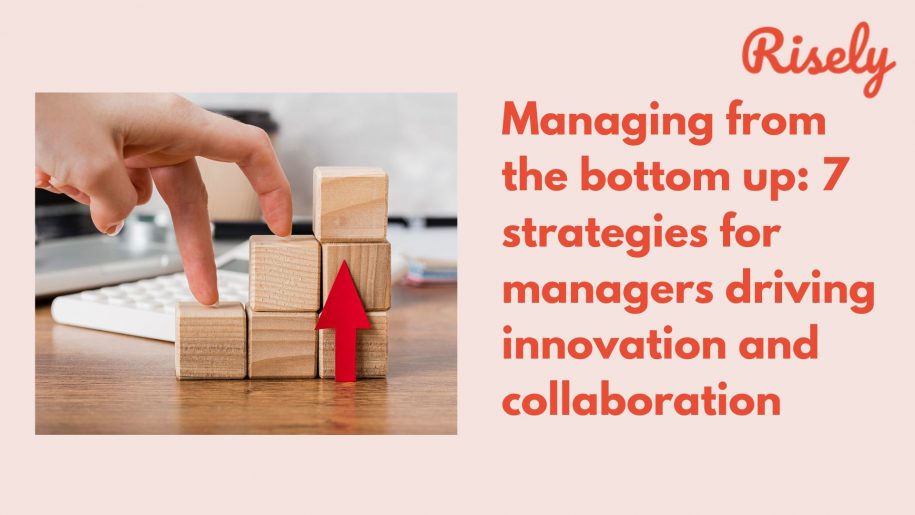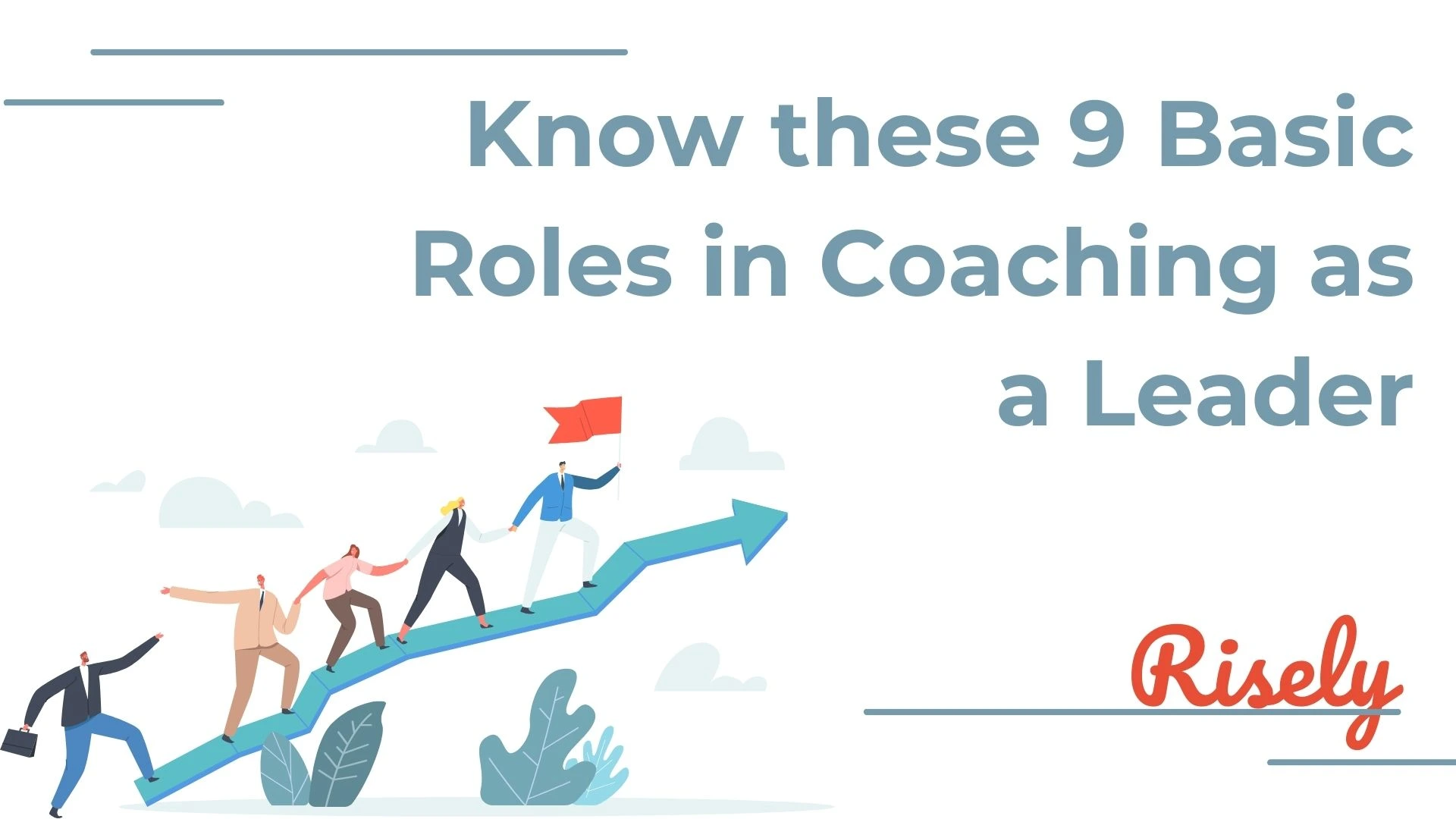Managing from the bottom up: 7 strategies for managers driving innovation and collaboration
In traditional management, decision-making flows from the top down, with directives cascading through layers of hierarchy. But in today’s rapidly evolving business landscape, organizations are realizing the immense potential that lies within their workforce. Managing from the bottom up is a revolutionary approach that flips the script, empowering employees at all levels to actively shape the future of their organization. Imagine a workplace where every individual’s ideas are not only heard but celebrated. Where innovation thrives, collaboration is the norm, and employee engagement soars. This is the essence of managing from the bottom up, where employees’ collective wisdom and insights become the driving force behind organizational success. In this blog, we delve into the world of bottom-up management, exploring its definition, characteristics, and the transformative benefits it brings. Whether you’re a forward-thinking leader or an aspiring manager, this blog managing from the bottom up will inspire you to reimagine the possibilities within your organization.- Managing from the bottom up: 7 strategies for managers driving innovation and collaboration
- What is bottom-up management?
- Characteristics of bottom-up management
- Benefits of managing from the bottom up
- Drawbacks of managing from the bottom up
- Strategies for managers to implement the bottom-up approach
- How to decide if the bottom up approach is correct for your organization?
- Conclusion
- Frequently asked questions
- Other Related Blogs
What is bottom-up management?
Bottom-up management, or participative or decentralized management, is an organizational approach where decision-making authority and control are distributed among employees at various levels of the hierarchy. In bottom-up management, employees are actively involved in decision-making, providing input, ideas, and suggestions that influence organizational strategies, operations, and initiatives.Characteristics of bottom-up management
- Empowerment and participation: Bottom-up management aims to empower employees by giving them a voice in decision-making processes. It encourages active participation and involvement in shaping the organization’s direction and activities.
- Delegation of decision-making authority: Decision-making authority is decentralized, allowing employees at different levels to decide on their areas of expertise and responsibilities. Managers act as facilitators and enablers rather than sole decision-makers.
- Knowledge sharing and learning: The approach recognizes the value of employees’ knowledge, skills, and experience. It promotes knowledge sharing and continuous learning, enabling employees to contribute their expertise and learn from one another.
- Adaptability and agility: Bottom-up management enables organizations to be more adaptable and responsive to changes in the external environment. By leveraging the insights and perspectives of employees, organizations can quickly adjust strategies, operations, and processes to meet evolving challenges and opportunities.
- Continuous improvement and innovation: The approach encourages a culture of continuous improvement and innovation. Employees are encouraged to identify and propose new ideas, solutions, and initiatives to enhance organizational performance and drive innovation.
Benefits of managing from the bottom up
Managing from the bottom up offers a range of benefits that positively impact organizations and their employees. A few are listed below:- Increased employee engagement: Empowering employees to participate in decision-making fosters a sense of ownership and accountability for their work. When employees’ ideas and contributions are valued and respected, it creates a positive work environment. This, in turn, leads to higher job satisfaction, productivity, and retention rates.
- Enhanced creativity: By involving employees at all levels, organizations can tap into diverse perspectives and ideas. Bottom-up management encourages employees to think creatively, contributing innovative solutions and approaches. This increased innovation can lead to competitive advantages, improved products or services, and better problem-solving.
- Better decision-making and problem-solving: Including employees bring a broader range of expertise and knowledge. Decisions are made with a more comprehensive understanding of the challenges and opportunities faced at various levels of the organization. Bottom-up management reduces the risk of groupthink and allows for a more critical evaluation of ideas and proposals.
- Increased customer satisfaction and loyalty: Empowered and engaged employees are more likely to deliver exceptional customer service. Bottom-up management enables employees to tailor their approaches and solutions to meet customer needs more effectively. Satisfied customers result in increased loyalty, positive word-of-mouth, and business growth.
- Enhanced problem identification and early detection: Employees at all levels are more likely to identify and raise potential issues or challenges in their respective areas of expertise. Bottom-up management ensures that problems are identified and addressed early, preventing them from escalating into more significant issues.
- Better utilization of employee skills and expertise: Bottom-up management allows managers to tap into their employees’ diverse skills, knowledge, and expertise. Employees are given opportunities to contribute their unique strengths, resulting in more effective utilization of their capabilities.
- Reduced employee resistance to change: When employees are actively involved in decision-making, they become stakeholders in the change process. Bottom-up management increases employee buy-in and reduces change resistance, leading to smoother transitions.
- Positive impact on organizational reputation: Organizations that embrace bottom-up management are often seen as progressive, inclusive, and employee-centric. A positive organizational reputation can attract top talent, enhance customer trust, and strengthen stakeholder partnerships.
Other Interesting Reads
Drawbacks of managing from the bottom up
While offering several benefits, managing from the bottom up also presents certain drawbacks that should be considered. Let’s explore these drawbacks:- Potential for decision-making inefficiency: One major drawback of bottom-up management is the potential for prolonged decision-making processes. Gathering and considering input from various employees can take time.
- Lack of strategic alignment and direction: Decentralized decision-making can carry the risk of divergence from the organization’s overall strategic goals and direction. Different teams or departments may pursue conflicting objectives or strategies without clear guidance and alignment, undermining organizational cohesion and effectiveness.
- Difficulty managing conflicts and reaching consensus: Managing from the bottom-up, conflicts and disagreements among employees may arise when multiple perspectives and ideas are put forward. Reaching consensus can be challenging, requiring effective facilitation and conflict resolution skills to ensure productive and cohesive decision-making processes.
- Potential for resistance from middle management: The shift of decision-making authority to lower-level employees in bottom-up management may trigger resistance or reluctance from middle managers. They may perceive their roles as being threatened, hindering the successful implementation of bottom-up management practices. Overcoming resistance and ensuring middle managers’ support is crucial for the smooth transition and effective functioning of the approach.
- Limited scalability and alignment in large organizations: While bottom-up management can be effective in smaller organizations, it may face challenges in larger organizations with numerous employees and complex hierarchies. Maintaining alignment and effective communication across all levels becomes more difficult as the organization grows.
- Potential for information overload and decision paralysis: With many employees contributing to decision-making, there is a risk of information overload, making it challenging to filter and prioritize ideas and suggestions. Decision paralysis may occur when there is an excessive number of options or when decisions cannot be reached due to the overwhelming amount of input, slowing progress and hindering timely decision-making.
- Lack of accountability and responsibility: In bottom-up management, the diffusion of decision-making authority can sometimes result in a diffusion of accountability. Clear mechanisms should be in place to ensure that decision-makers are accountable for their choices and the outcomes they produce, maintaining a sense of responsibility and ownership within the organization.

Strategies for managers to implement the bottom-up approach
Managers are crucial in implementing the bottom-up approach within their teams and the organization. Here are some bottom up strategies that managers can use:- Foster open communication: Encourage open and transparent communication within the team. Create a safe space for employees to share their ideas, concerns, and feedback. Actively listen to their input and value their perspectives.
- Delegate decision-making authority: Delegate decision-making authority to employees whenever possible. Give them autonomy to make decisions related to their work and responsibilities. Provide clear guidelines and boundaries to ensure alignment with organizational goals and values.
- Empower and support employees: Empower employees by providing them with the resources, information, and support they need to make informed decisions. Offer training and development opportunities to enhance their skills and confidence. Be available to provide guidance and guidance when required.
- Encourage collaboration: Foster a collaborative environment where employees are encouraged to work together, share knowledge, and leverage each other’s strengths. Promote cross-functional collaboration to solve problems and drive innovation.
- Recognize and reward contributions: Recognize and reward employee contributions to the bottom-up approach. Acknowledge innovative ideas, successful initiatives, and problem-solving efforts. Celebrate and appreciate employees’ contributions to reinforce the importance of active participation.
- Act as a facilitator and coach: Shift from a directive management style to a facilitative and coaching approach. Support employees in developing their decision-making and problem-solving skills. Act as a resource and guide rather than a strict authority figure.
- Collaborate with other managers: Work collaboratively with other managers and leaders to ensure consistency and alignment in implementing the bottom-up approach. Share best practices, learn from each other’s experiences, and support each other in driving organizational change.
How to decide if the bottom up approach is correct for your organization?
Deciding whether managing from the bottom up is the right approach for your organization requires careful consideration and assessment of various factors. Some steps to help you make an informed decision:- Evaluate organizational culture: Assess your organization’s current culture and values. Consider whether there is a culture of openness, collaboration, and empowerment or if it is more hierarchical and top-down.
- Assess employee engagement: Evaluate the level of employee engagement within your organization. Are employees actively involved in decision-making processes? Do they feel empowered and have a sense of ownership? Assessing employee satisfaction and engagement can provide insights into the readiness for a bottom-up approach.
- Consider the nature of the work: Reflect on the nature of your organization’s work and the level of complexity involved. Bottom-up management may be more suitable for organizations that require innovation, problem-solving, and creativity. It can be particularly effective in knowledge-based industries or environments where employees have valuable expertise and insights to contribute.
- Evaluate decision-making processes: Review your existing decision-making processes. Assess the extent to which decisions are centralized or decentralized. Consider whether involving employees in decision-making would lead to better outcomes and if it aligns with the organization’s objectives.
- Consider the size of the organization: Consider the size and structure of your organization. Bottom-up management may be more easily implemented in smaller organizations or specific teams, where communication channels are more direct and decision-making processes are more agile.
- Evaluate potential benefits and challenges: Consider the benefits and challenges of implementing a bottom-up approach. Assess the potential for increased employee engagement, innovation, and improved decision-making. Also, consider challenges such as the need for additional communication and coordination efforts or potential resistance to change.
- Implement it for a trial period: Consider implementing a pilot or trial period of bottom-up management in a specific team or department. This allows you to test the approach on a smaller scale and assess its effectiveness before considering wider implementation.
- Continuous evaluation and improvement: Commit to continuous evaluation and improvement regardless of your decision. Regularly assess the impact of your management approach on employee engagement, performance and productivity. Make adjustments as needed to ensure the approach aligns with the evolving needs of your organization.
Conclusion
As we reach the end of our blog into managing from the bottom up, one thing becomes abundantly clear: the potential for greatness lies within every member of an organization. By embracing the bottom-up approach, we tap into this wellspring of creativity, innovation, and collaboration, driving our organizations to new heights. Bottom-up management drives employee engagement and satisfaction and fuels organizational agility, adaptability, and long-term success. We unlock a wealth of untapped potential by valuing and incorporating employees’ perspectives at all levels. Through their experiences, we gain a deeper understanding of customer needs, identify emerging trends, and uncover innovative solutions. But let us remember that implementing a bottom-up approach requires a shift in mindset and a commitment to fostering a culture of trust, openness, and continuous learning. It requires leaders willing to relinquish control and empower their teams to take ownership of their work and contribute their unique talents.What’s holding you back as a manager? Find out now with a free assessment.
Take the leadership skill assessments for managers and leaders to ensure that you are not making critical mistakes.
Frequently asked questions
What does it mean to manage from the bottom up?
Managing from the bottom up means giving decision-making authority and empowering employees at lower levels of the organization. It involves valuing their input, ideas, and expertise and incorporating them into the decision-making process.
What is an example of bottom-up management?
An example of managing from the bottom up is when a company creates cross-functional teams comprising employees from different levels and departments to work together on a project. These teams have the autonomy to make decisions, set goals, and collaborate on problem-solving, allowing ideas to flow from the bottom levels of the organization upwards.
What is a bottom-up approach style of management?
The bottom-up approach style of management involves distributing decision-making authority throughout the organization rather than concentrating it at the top. It emphasizes employee empowerment, autonomy, and active involvement in shaping the organization’s direction.
What is top-down vs. bottom-up management?
Top-down management refers to a hierarchical approach where decisions and directives come from the top-level executives and are cascaded down through the organizational hierarchy. Bottom-up management, on the other hand, involves delegated decision-making authority to lower-level employees, fostering a more inclusive and participatory approach to management.
Other Related Blogs
Know these 9 Basic Roles in Coaching as a Leader
In this blog, we will learn about the 9 essential roles in coaching that every L&D Leader should know to help team managers mentor, motivate and guide their team towards…
How Evidence-Based Coaching and Its Models Empower Leaders?
In this blog, we dive deep into what evidence-based coaching is, its core models and their implementation in an organization. … Read More
5 Unique Benefits Of Online Leadership Coaching
5 Unique Benefits Of Online Leadership Coaching Remember the days of leadership development being confined to a stuffy conference room filled with flipcharts and generic advice? Yeah, those days are…
5 Secrets To Ace Project Manager Training
5 Secrets To Ace Project Manager Training You’ve poured your heart and soul into building a dream team. You’ve recruited talented individuals with diverse skill sets, and you’re confident they…


